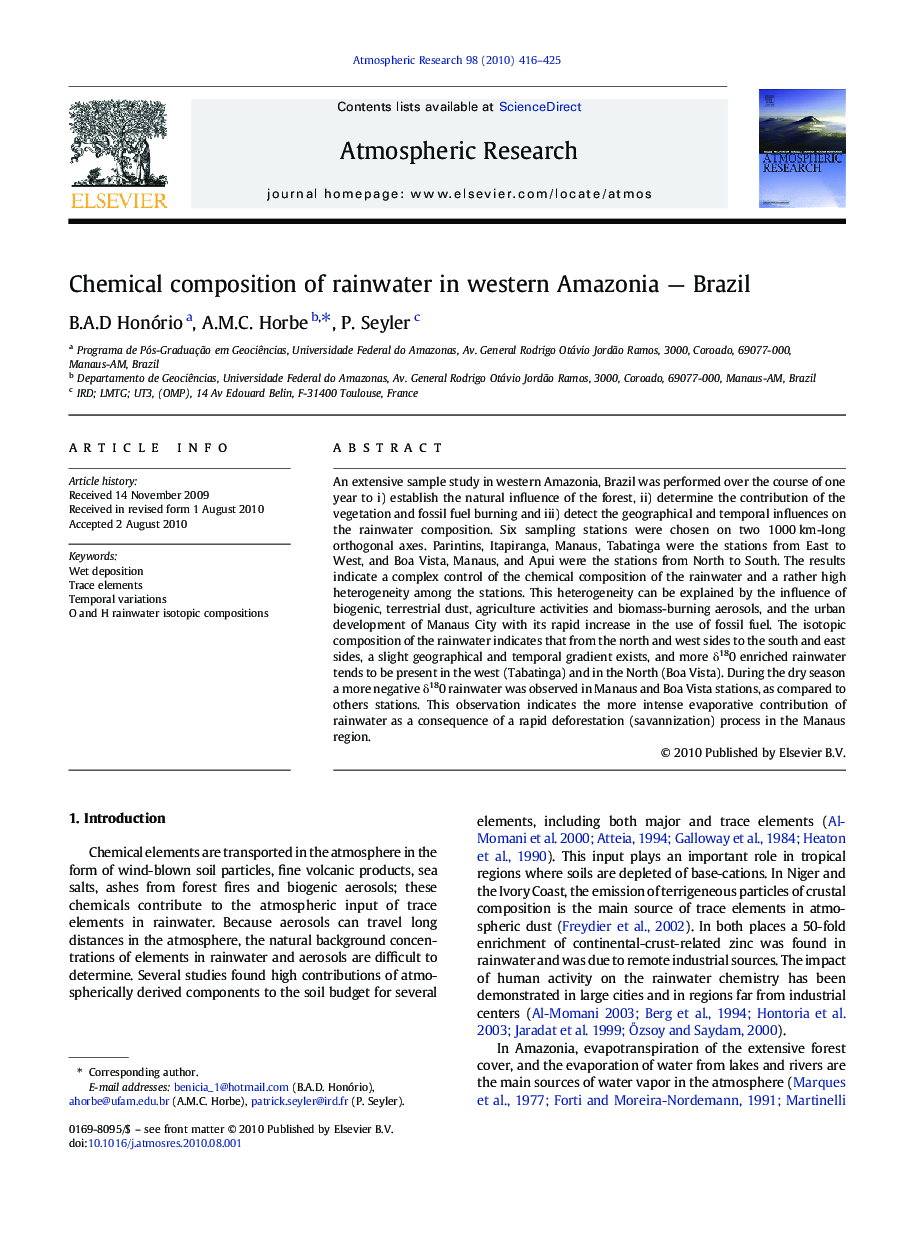| Article ID | Journal | Published Year | Pages | File Type |
|---|---|---|---|---|
| 6344196 | Atmospheric Research | 2010 | 10 Pages |
Abstract
An extensive sample study in western Amazonia, Brazil was performed over the course of one year to i) establish the natural influence of the forest, ii) determine the contribution of the vegetation and fossil fuel burning and iii) detect the geographical and temporal influences on the rainwater composition. Six sampling stations were chosen on two 1000 km-long orthogonal axes. Parintins, Itapiranga, Manaus, Tabatinga were the stations from East to West, and Boa Vista, Manaus, and Apui were the stations from North to South. The results indicate a complex control of the chemical composition of the rainwater and a rather high heterogeneity among the stations. This heterogeneity can be explained by the influence of biogenic, terrestrial dust, agriculture activities and biomass-burning aerosols, and the urban development of Manaus City with its rapid increase in the use of fossil fuel. The isotopic composition of the rainwater indicates that from the north and west sides to the south and east sides, a slight geographical and temporal gradient exists, and more δ180 enriched rainwater tends to be present in the west (Tabatinga) and in the North (Boa Vista). During the dry season a more negative δ180 rainwater was observed in Manaus and Boa Vista stations, as compared to others stations. This observation indicates the more intense evaporative contribution of rainwater as a consequence of a rapid deforestation (savannization) process in the Manaus region.
Related Topics
Physical Sciences and Engineering
Earth and Planetary Sciences
Atmospheric Science
Authors
B.A.D Honório, A.M.C. Horbe, P. Seyler,
